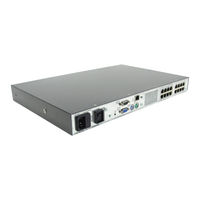HP 1x1x16 - IP Console Switch KVM 16 Port Manuals
Manuals and User Guides for HP 1x1x16 - IP Console Switch KVM 16 Port. We have 3 HP 1x1x16 - IP Console Switch KVM 16 Port manuals available for free PDF download: User Manual, Integration Notes
Advertisement
HP 1x1x16 - IP Console Switch KVM Integration Notes (8 pages)
LDAP Directory Services Option for the HP IP Console Switch
Table of Contents
Advertisement
Advertisement


